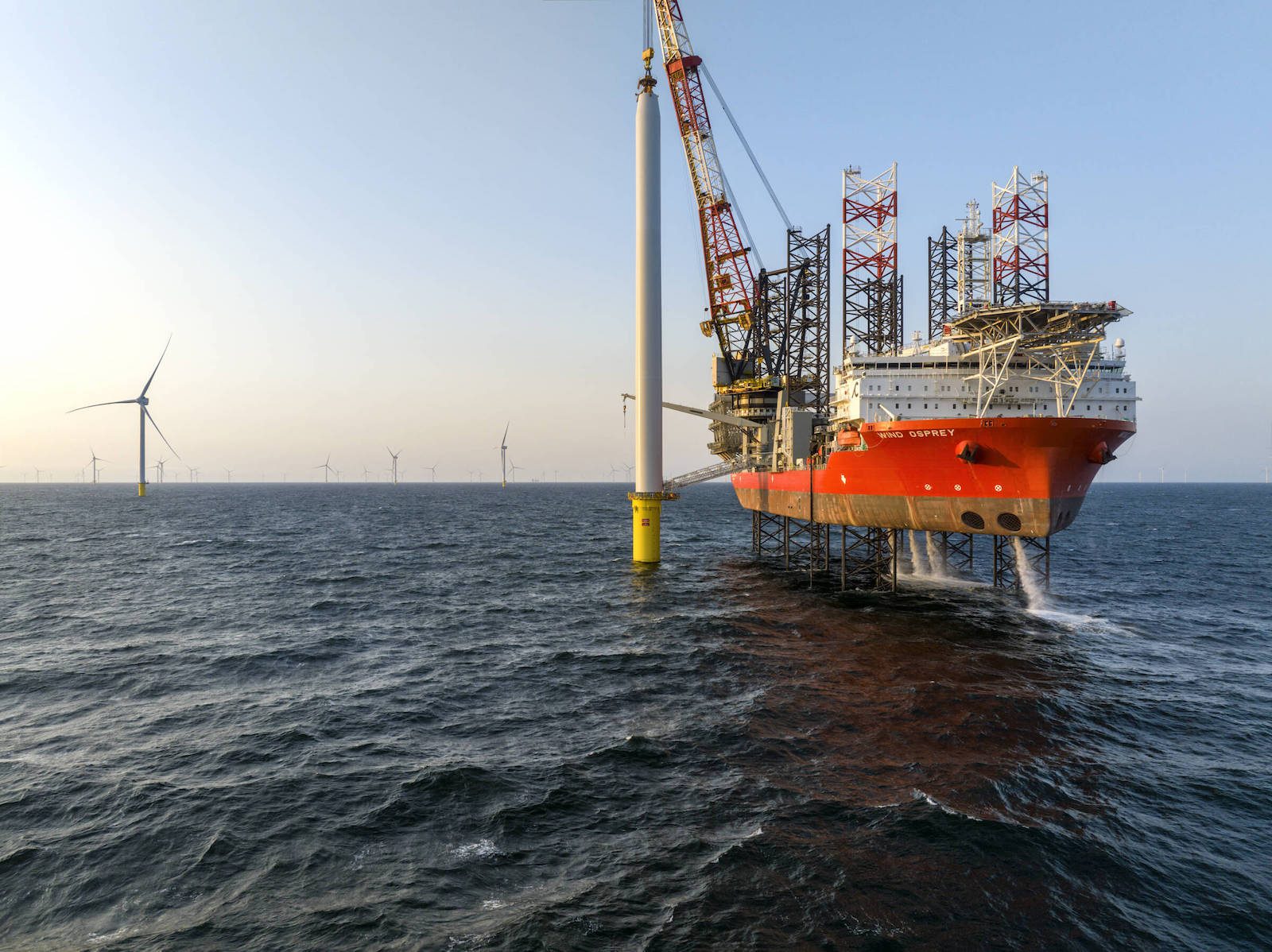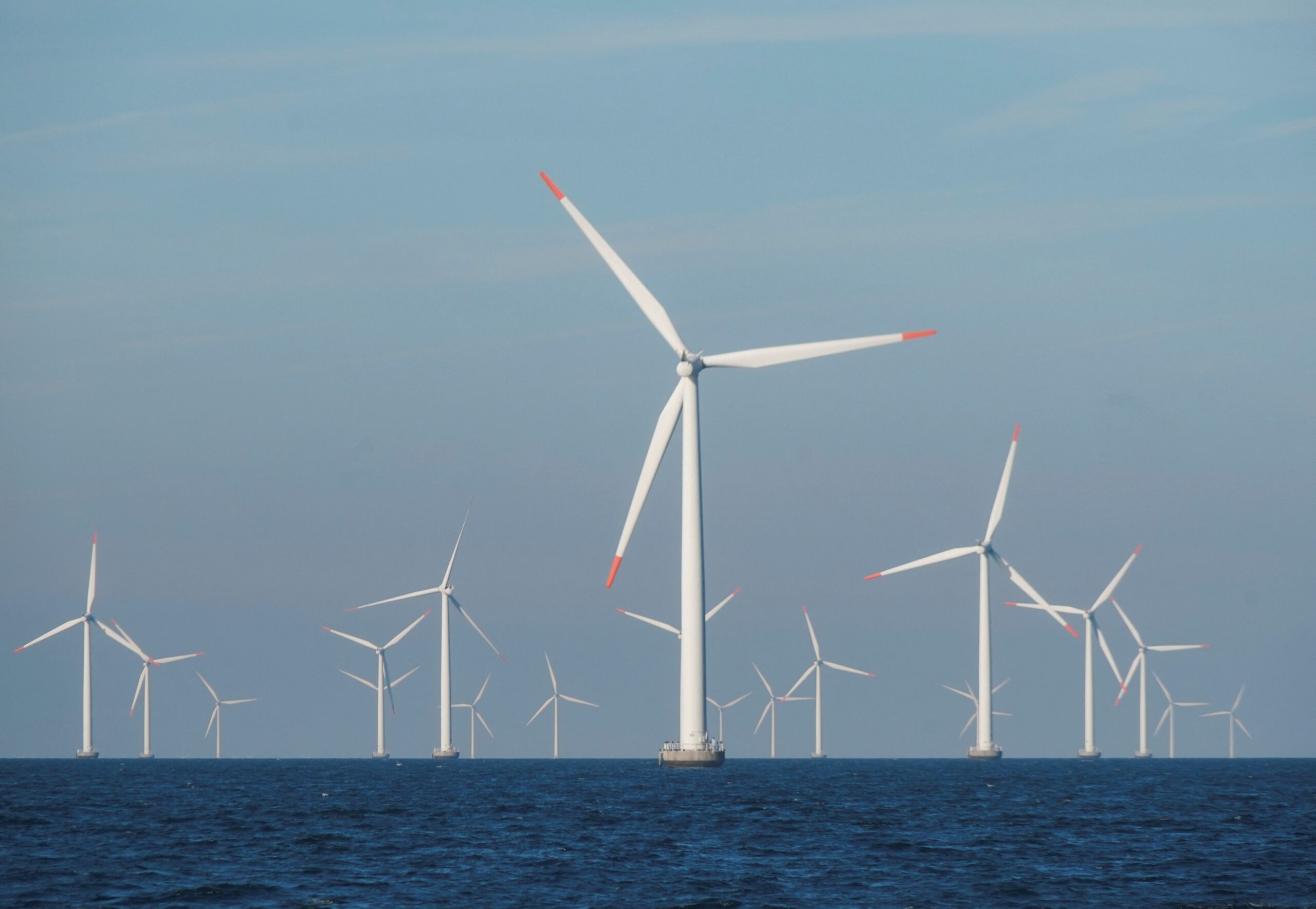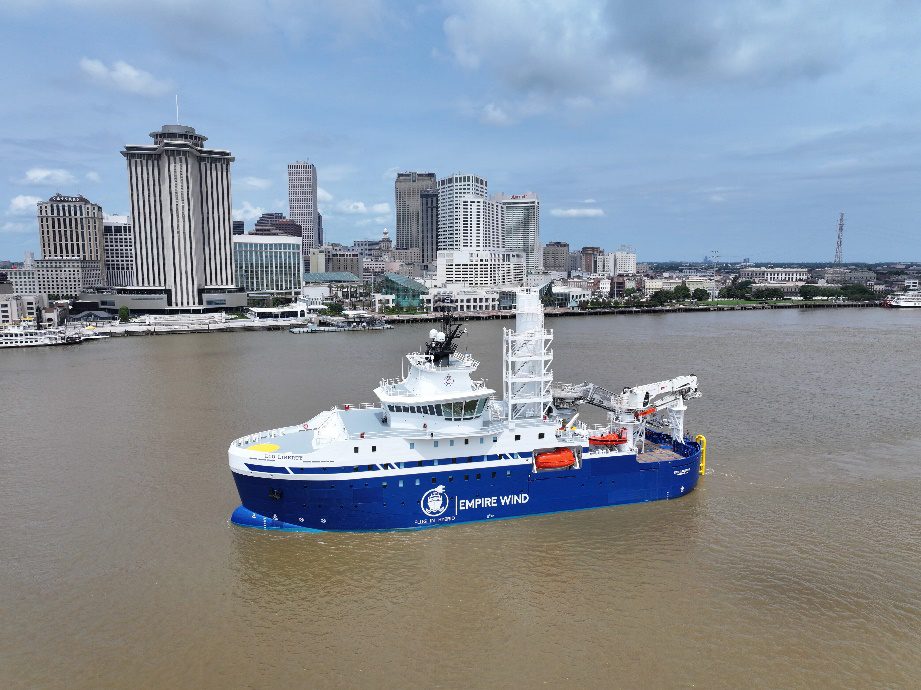FILE PHOTO: A support vessel is seen next to a wind turbine at the Walney Extension offshore wind farm operated by Orsted off the coast of Blackpool, Britain September 5, 2018. REUTERS/Phil Noble
By Will Mathis (Bloomberg) –One of the world’s biggest developers of offshore wind farms thinks its massive turbines could be key to the production of hydrogen in a greener way and ultimately, stemming climate change.
Over the past decade, offshore wind has pushed from a frontier technology to a multi-billion-dollar industry that provides green power cheap enough to compete with fossil fuels. Orsted A/S, a Danish company, anticipates that the scale and efficiency of wind farms at sea can play a crucial role to supply heavy industry with green hydrogen.
Hydrogen is important because it’s one of the few fuels that can burn hot enough to make steel and cement, two of the most polluting industries. At the moment, most hydrogen is derived from natural gas and causes greenhouse gas emissions. Getting the element from electrolysis driven by wind farms would make it a zero-emissions fuel, since no carbon dioxide comes with hydrogen in the combustion process. As long as these heavy industries rely on polluting fossil fuels, it may be impossible to achieve the goals in the 2015 Paris Agreement on climate change.
“You cannot do it without hydrogen,” Anders Nordstrom, head of hydrogen at Orsted, said in an interview. “Everything that can be electrified, you should electrify, but that leaves a substantial part of de-carbonization where hydrogen is the second-best option because electricity isn’t feasible.”
Manufacturing is responsible for about 10% of global carbon dioxide emissions because it relies on high-temperature furnaces that mostly run on fossil fuels such as coal and oil. Some processes like cement require chemical reactions that throw off CO2 in addition to the emissions from burning fuels.
Hydrogen can be used as an alternative fuel in many of those processes. The issue is getting the gas without making more CO2.
Machines known as electrolyzers can create the hydrogen by splitting it out of water molecules. And when it burns, hydrogen leaves only water vapor behind. If the whole process is powered by a wind farm, no emissions are involved.
To Orsted, it makes sense to pair offshore wind farms with hydrogen electrolyzers. Wind turbines are bigger and run more often when they’re sited at sea instead of on land — often enough that they sometimes spin when the grid can’t absorb more power.
Hydrogen factories could take that power and turn it into a gas. That would deliver another benefit in that they can store that energy for use later — something that’s more difficult when the energy comes in the form of electricity.
As the industry pushes to rapidly expand offshore wind in Europe, electrolysis may also help balance the variable generation rates of wind farms. When the wind doesn’t blow that strongly, electrolyzers could be turned down. When the wind picks up, the hydrogen production could be scaled up.
Since 2018, Nordstrom has run a small team of people at the Danish energy company that’s focused on hydrogen. During 2019, the company unveiled a pair of pilot projects in the U.K. and Germany. A failed bid for an offshore wind farm off the coast of the Netherlands also included plans to incorporate green hydrogen. Orsted is continuing to develop hydrogen projects in the country and has a pipeline of other projects around northwest Europe, Nordstrom said.
The major challenge is cost. Green hydrogen costs between $2.50 and $6.80 a kilogram to make, due to the relatively high costs of renewable-powered electrolysis, according BloombergNEF. That would need to fall below $2 in order to make renewable hydrogen competitive with coal, and to around 60 cents to beat the cheapest natural gas-based production, according to BNEF.
That cost could come down to be competitive with fossil fuel by 2030, according to Nordstrom. A number of factors would need to fall into place to achieve that, such as increased scale of electrolysis projects, cheaper and more efficient electrolyzers and a higher carbon price, he said.
The executive sees a parallel between hydrogen and offshore wind in terms of their level of development. Just a few years ago, offshore wind was more expensive than nuclear power. Now it rivals coal on cost in some places.
“We are where offshore wind was 10 years ago,” Nordstrom said. “It’s the same cost journey we need to take.”
Green hydrogen will also have to contend with competition from natural gas, which can be used to make hydrogen as well. That method produces carbon dioxide in the process.
By 2025, Orsted will move beyond studies and have electrolyzer projects up and running, including a 30-megawatt project it’s part of in Germany, Nordstrom said. Beyond then, scale and potential is hard to forecast.
“It’s quite difficult to predict where we’ll be in 10 years,” Nordstrom said. “There’s an exponential feel to what’s happening at the moment.”
© 2019 Bloomberg L.P

 Join The Club
Join The Club











